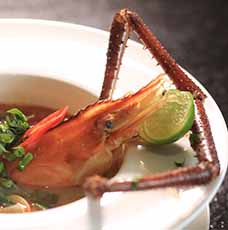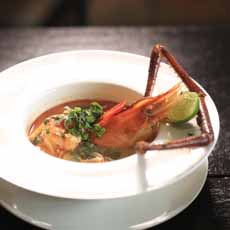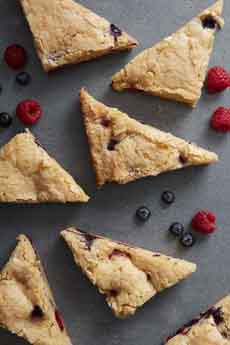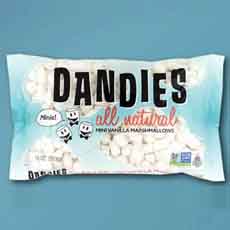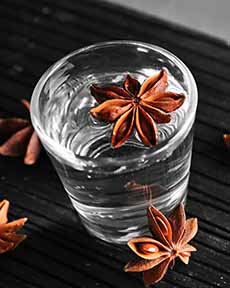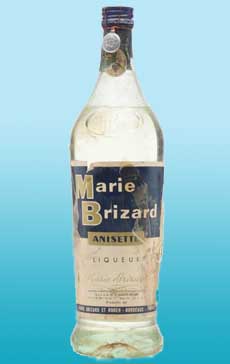|

[1] Melt Miyoko’s vegan cultured butter and toss it with popcorn (all photos © Miyoko’s Creamery).

[2] Spread Miyoko’s vegan cream cheese on a bagel.

[3] Serve a Loire-style soft cheese wheel with crackers and wine.

[4] Spread Miyoko’s roadhouse cheeses on bread, crackers or pretzels. Shown here: Biergarten Garlic & Chive.
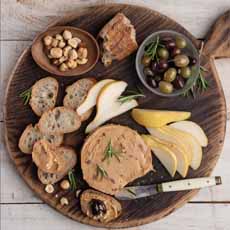
[5] Create a beautiful vegan cheese board. Shown here: Sundried Tomato Garlic cheese wheel.
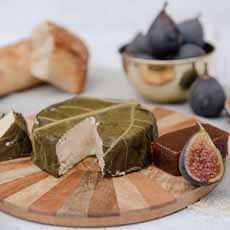
[6] Serve Fresh Loire Valley cheese with figs and membrillo (quince paste).

[7] Toss vegan cheese with hot pasta to create a creamy sauce.
|
|
Our colleague Hannah Kaminsky, a vegan food writer and photographer who lives in Northern California, told us several years ago: You must try Miyoko’s vegan cheese and butter.
While not a vegan, we were on top of the sweeping trend. We also are a proponent of sustainability† and try to watch our cholesterol (vegan foods help both).
At that time Miyoko’s Creamery had no e-commerce, and distribution only in California. These days, you can find the products on Amazon, at other e-tailers, and at 10 stores in my Manhattan zip code alone!
Miyoko’s has gone mainstream, and that’s a good thing. Here’s a store locator.
ABOUT MIYOKO
The increase in veganism—full or partial†—continues to rise. It was the number one food trend of 2018 [source].
Miyoko Schinner became a name in the Bay Area in the late 1980s, as a vegan restaurateur, host of cooking classes and author of cookbooks.
In the last decade, she has focused on creating the finest vegan cheeses and butter.
A lover of conventional cheeses—“The ‘good life’ isn’t complete without a glass of wine and some fine cheese,” she has said—she discovered that she had lactose intolerance [source].
That, along with her compassion for animals, led her to create “plant based cheeses that retained all the complexity and sharpness of their dairy counterparts.”
Miyoko’s uses traditional artisan creamery methods to create plant-based vegan cheeses from cashews and other “real food” ingredients. The result: creamy vegan cheeses that can easily substitute for dairy products, and even melt like dairy cheese.
We can attest, as a lifelong lover of fine dairy cheeses, that what she has created from cashews and coconut oil, among other ingredients*, is remarkable.
Her line is certified USDA Organic. The products are free of cholesterol, dairy, gluten, lactose and soy, and the ingredients are non-GMO.
As with their dairy counterparts, the cheeses and butter are cultured and aged (depending on product). The cheeses range from soft and spreadable to hard and sliceable.
PRODUCTS FROM MIYOKO’S CREAMERY
These vegan products are more tart than their dairy counterparts, in the way that yogurt is more tart than sour cream.
They are blessed options for vegans and the lactose intolerant.
Butter
Mikoyo has crafted a cultured vegan butter in the style of European cultured butters. We use it on toast, baked potatoes and vegetables.
Melt it and toss it with popcorn (photo #1), slide it over an ear of corn.
It also browns when cooking. It is a most welcome alternative to dairy butter.
Cream Cheese
A bagel no longer needs to be parted from cream cheese. Miyako’s makes three vegan varieties:
Classic Double Cream Chive (photo #2)
Sensational Scallion
Unlox Your Dreams
They will melt into creamy sauce; for example, if you toss them with hot pasta (photo #7).
Loire-Style Cheese Wheels
In the style of goat cheese wheels from the Loire, these vegan wheels are ready to enjoy with a glass of wine and a baguette or crackers (photo #3):
Black Ash
Classic Double Cream Chive
Garlic Herb
Fresh Loire Valley (wrapped in a grape leaf—photo #6)
Herbes de Provence (photo #3)
Sundried Tomato Garlic
Garlic Herb
Winter Truffle (seasonal)
More Cheese Styles
Mozzarella, fresh or smoked: for a vegan Caprese salad, panini or pizza.
Rustic Alpine is made in the semi-hard style of Alpine cheeses: nutty flavor with sweet overtones. You can melt it into fondue or grate it into risotto.
Farmhouse cheeses are sliceable and uses beyond crackers and bread:
Sharp Farmhouse: a hard, aged, sharp round with complex flavors that continues to age in your fridge. Use it in a sandwich, or melt it with nondairy milk for a luscious sauce.
Smoked Farmhouse: a semi-hard wheel with rich, sharp, smoky tones. Add it to sandwiches or sauces.
Roadhouse cheeses, the type served in European beer gardens, are spreadable, a perfect pairing with beer or wine, bread, crackers, and soft pretzels (photo #4).
Biergarten Garlic Chive
Cheers To Cheddah
Spicy Revolution
|
You can create a beautiful cheese board with any one of these cheeses (photo #5).
Or, put a few cheeses together for a memorable experience. (National Vegan Day is November 1st.)
VEGAN DAIRY SUBSTITUTES YOU CAN MAKE
Miyoko’s cookbook, Artisan Vegan Cheese, has recipes for the above products as well as vegan creme fraiche, ricotta, sliceable cheeses, sour cream and yogurt.
The book has recipes to incorporate the products into appetizers, entrees, and desserts; for example, vegan Caprese salad, eggplant parmesan, mac and cheesecake.
You can find it on Amazon.
Discover more at Miyokos.com.
________________
*Other organic ingredients include, for the Loire-style cheeses: chickpea miso, cultures, herbs, nutritional yeast, rice miso, vegetables, sea salt and spices. For the European-style vegan butter: cultures, sunflower oil, sunflower lecithin and sea salt.
†While we are an omnivore, we are a “partial vegan.” Concerned about the planet and greenhouse gasses, we make vegan choices where we can. A vegan dish is just as delicious as one with animal protein.
|
